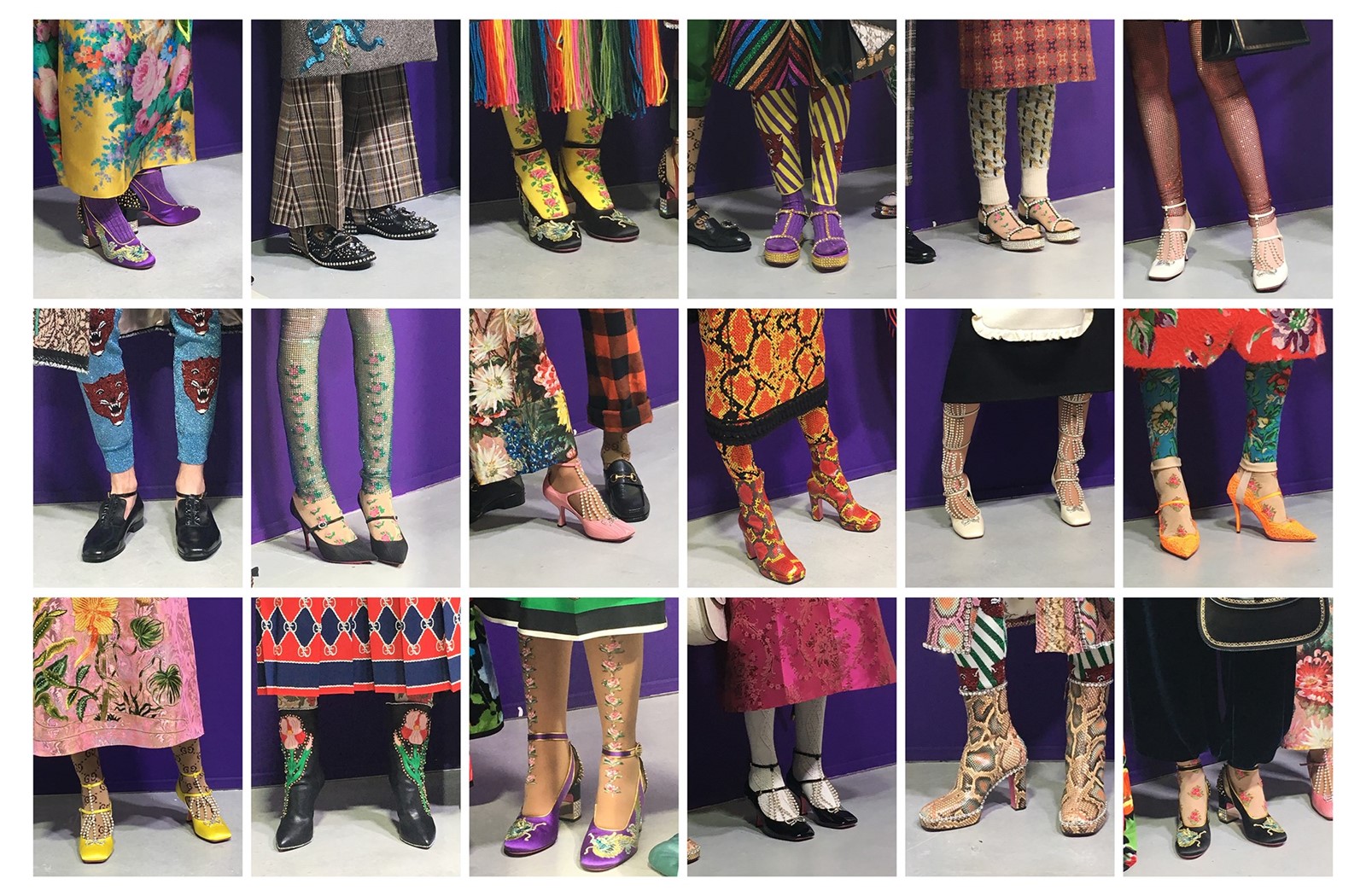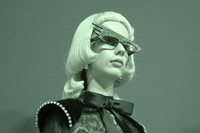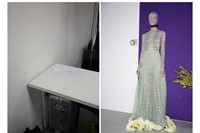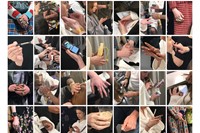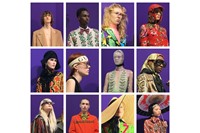Since the appointment of Alessandro Michele as creative director in 2015, the house of Gucci has undergone a seismic revolution – one immediately evident from the very first collection the designer sent onto the runway, which saw androgyny reign and the pussy bow blouse emphatically return to the forefront of fashion. Under Michele’s guidance, the polished glamour and sexual provocation of the house has been transformed; no longer is high-octane supermodel style the point of focus; rather, it is the eclectically dressed bohemian outsider. It’s now two years since his debut, and Michele’s impact is still reverberating throughout fashion: take one glance at street style blogs or the red carpet (let alone that Gucci store in Milan) to see his vision fully embraced by starlets and fashion aficionados alike. The success of his abundant, maximalist aesthetic shows little sign of waning.
Autumn/Winter 2017 felt like an XXL version of everything that Michele has been striving to communicate through Gucci thus far. An amalgamation of the codes and design tropes employed in his previous collections were amplified via 120 looks sent down the runway, which felt as though they were projections beaming directly from the designer’s creatively cacophonous brain – or, indeed, his Instagram feed. With so many things to examine simultaneously, knowing the right place to begin when picking apart this mammoth sartorial offering is somewhat overwhelming. So, we have made light work of the task for you, with our easily digestible account of what you need to know about Gucci’s maximalist sensibility – Jane Austen and self-cannibalising snakes included.
A Celebration of Abundance
It was clear from the very first look that Gucci A/W17 was not going to be a collection presented by halves (that is if the runway, bathed in purple light and constructed around a giant purple pyramid, didn’t provide evidence enough from the moment seats were taken). As each model appeared, the audience’s eyes were unsure where to look first: to the feet, clad in patent dolly shoes draped with pearls, or to the faces of the models, whose nostrils were pierced with horn-shaped adornments. Or perhaps to the hands, each finger encased in a ring (bovine heads formed from china, or beetles and moths for the more entomologically inclined), and clutching fringed parasols and kitten-headed canes. This is before the gargantuan straw hats sprouting feathers, or the reptilian mish-mashing of snakeskins with tapestried fabrics, or the Technicolor botanical embellishments on floor-length gowns are even taken into consideration. In Michele’s world, more is certainly more and, somehow, it works.
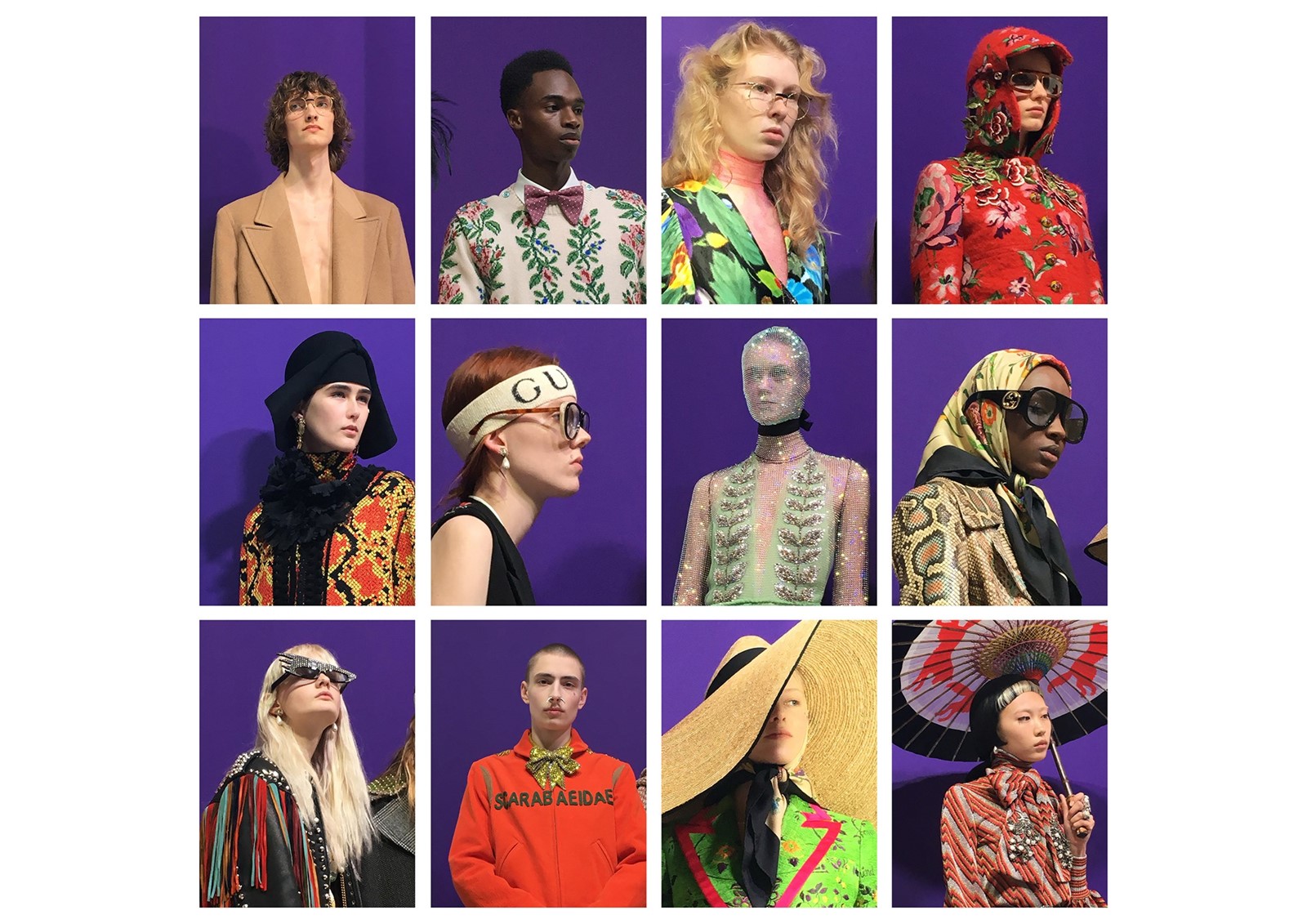
An Anti-Modern Time Warp
“An anti-modern laboratory,” proclaimed the show notes of the world Michele chose to create – and indeed, the designer employed multifarious influences sourced from many different eras, none of which were particularly modern in origin. There were logo-printed tank tops worn with riveted and ripped denim shorts, full diamanté body-suits and matching talons reminiscent of 1990s hip-hop. This was surprisingly juxtaposed with a clear nod to the 18th century in the form of rich, painterly prints and Jane Austen novel clutch bags. But Michele didn’t stop there, for the tail-end of the 1970s bumped into the beginning of the early 1980s, through the bouffant hairstyles and kitsch prom-night suiting that are now a Gucci staple. And then there was a nod to the 1960s, with Peter Pan collars and short-sleeved dresses worn with pink elbow-length gloves which made hands appear as though their fingers had been dipped in black leather and lace – imagine Jackie O had a run in with Siouxsie Sioux. In roughly 17 minutes, Michele took us through over 100 years of fashion history: certainly no mean feat.
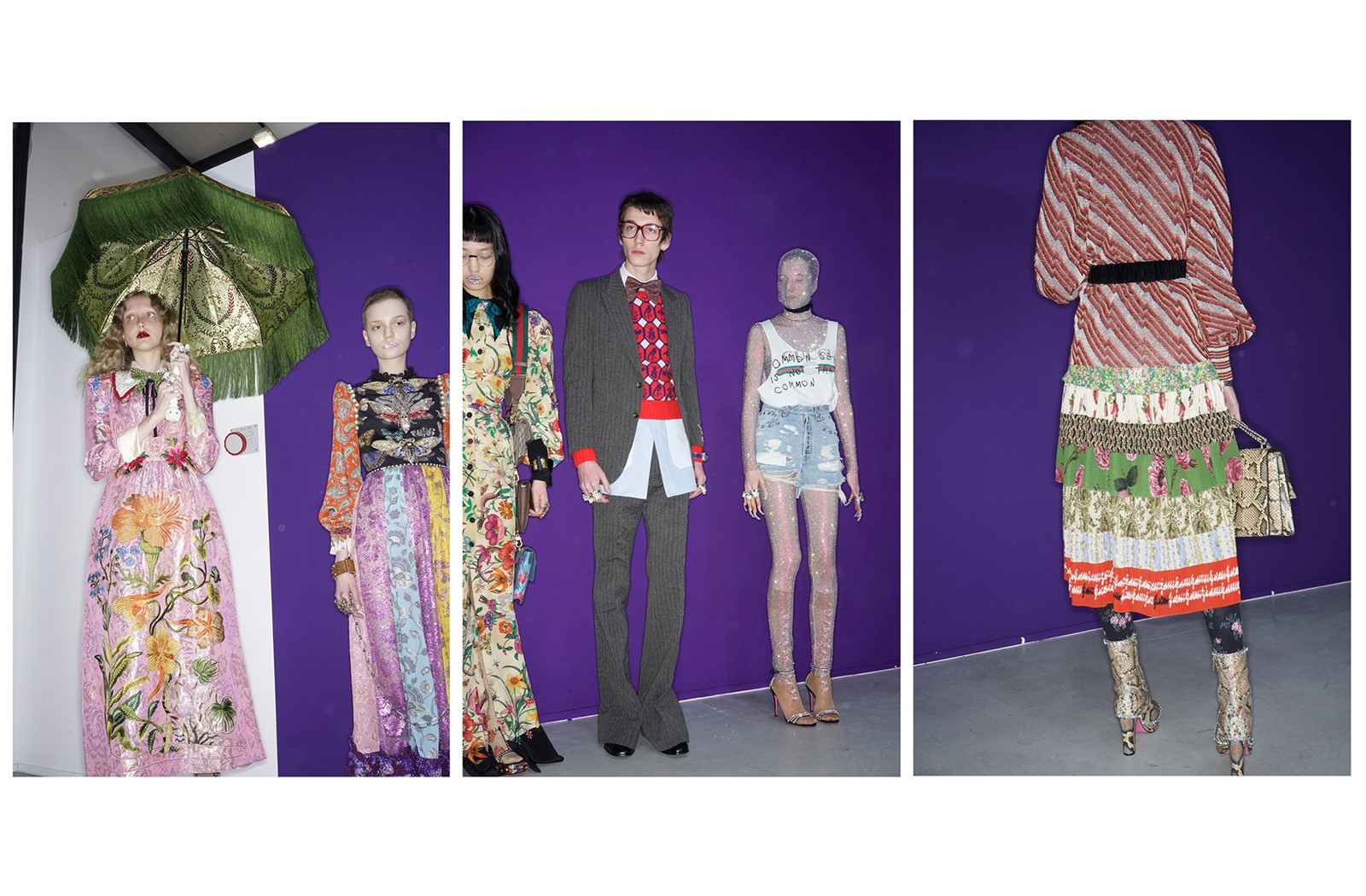
The Power of Creative Collaboration
For those who might have taken their record player to Milan with them, the Gucci show invite – printed on a 16-inch vinyl – played recordings of Florence Welch reading from William Blake’s Songs of Innocence and Experience and perhaps, more intriguingly, ASAP Rocky recounting a love letter from Anne Elliot to Captain Wentworth, an extract from Jane Austen’s 1817 novel Persuasion. Michele also celebrated his love of typography, as previously seen through collaborations with graffiti artist Gucci Ghost (aka Trevor Andrews) whose work was printed upon logo-embellished bags, T-shirts and silks alike. This season, he worked with artist and photographer Coco Capitán, who printed her signature scrawl onto both the cladding outside and onto vests in the show, declaring: “common sense is not that common”, and “what are we going to do with all this future?” Undoubtedly apt slogans for 2017, and pieces which will be particularly covetable when they appear on the rails.
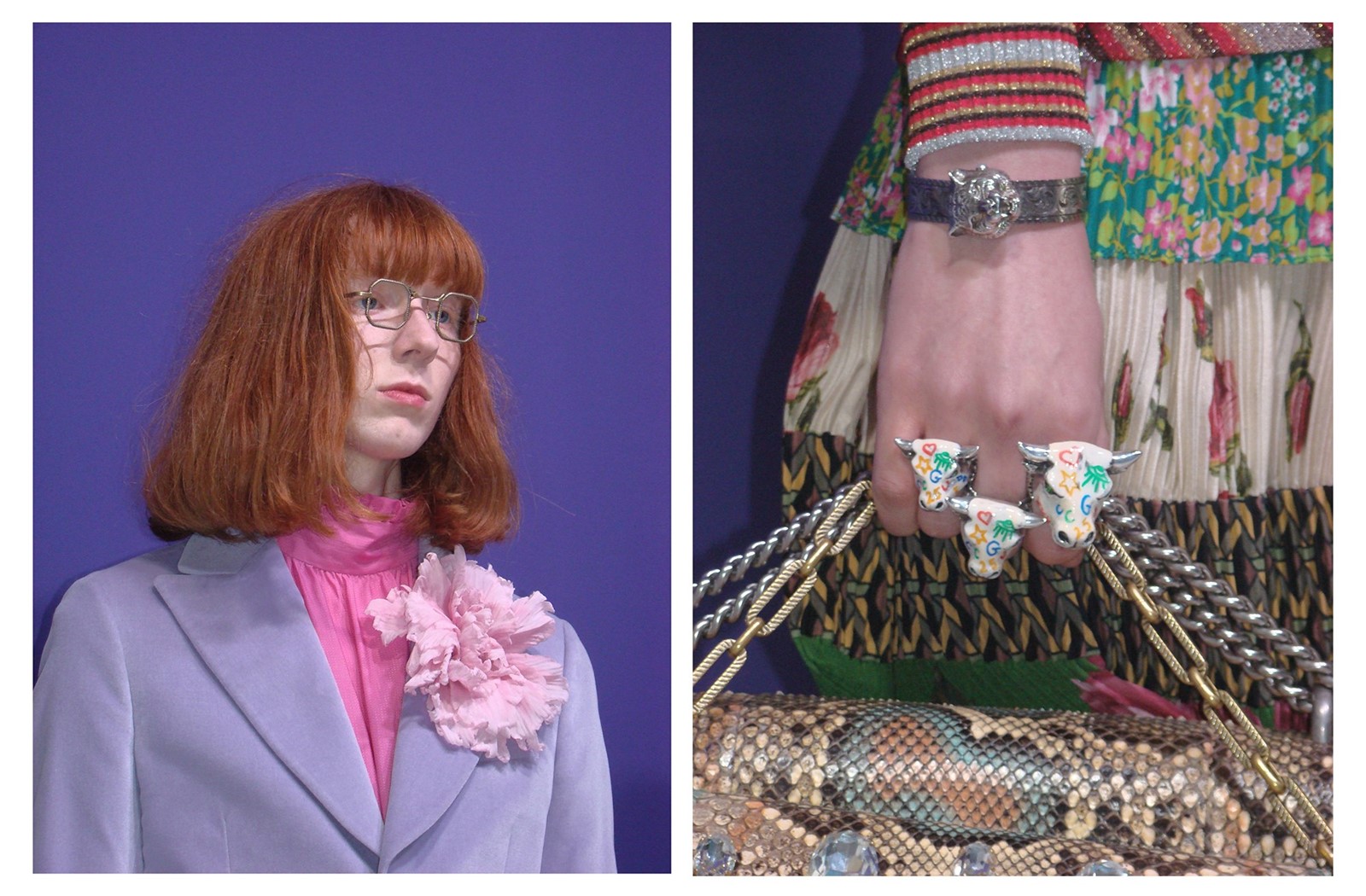
Le Geek, C’est Chic
Gucci has officially shed its storied history of Italo-glamour and embraced a more universal and androgynous look, Michele making it clear that he is not at all interested in using overt sexuality as a selling point. As with the now-signature prom-night suiting, the thick, retro lenses associated with bookish tendencies are ubiquitous in every collection that Michele produces – and have been so ever since the A/W15 show, where berets, woolen bobble hats and knitted sweater vests worn with secretarial blouses suddenly became the brand’s norm. It was no different, then, for A/W17, where eyewear was magnified in size and worn with, opaque floral tights, vintage-inspired jumpers and bow ties for an impact that was part Sofia Coppola librarian and part Georgian-era salon, had such a salon been attended by indie disco enthusiasts circa 2006.

Ample Symbolism
The show notes themselves consisted of around 400 words investigating the theme of alchemy and quoting philosophers of yore – it was clear that this was a piece of text we weren’t supposed to easily comprehend, and that Michele was playing with symbolism from the get go. At the bottom of the text, an ancient Egyptian symbol (the Ouberous) was printed, a motif also stamped onto the paper bags in which the aforementioned vinyl invites were contained. This symbol – a snake eating its own tail – signifies the old becoming the new, with the self-cannibalising serpent a representation of Alessandro Michele’s Gucci: a Gucci that in fact, finds no qualms with looking to the past to find a contemporary form of expression. We applaud his bravery.
For our A/W17 fashion week coverage, anothermag.com is collaborating with Gasoline, a photography collective working with visual artists around the world. Here, Rosie Marks presents a look at Gucci A/W17.
